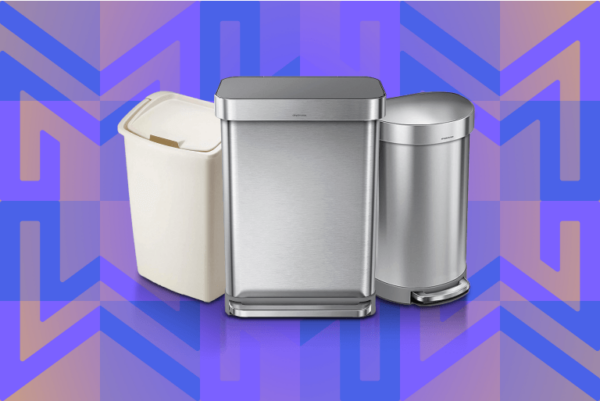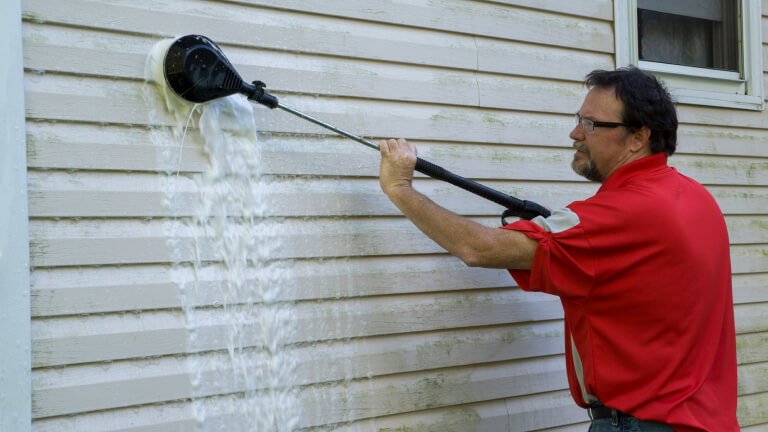Effective Black Mold Removal Options for Your Home
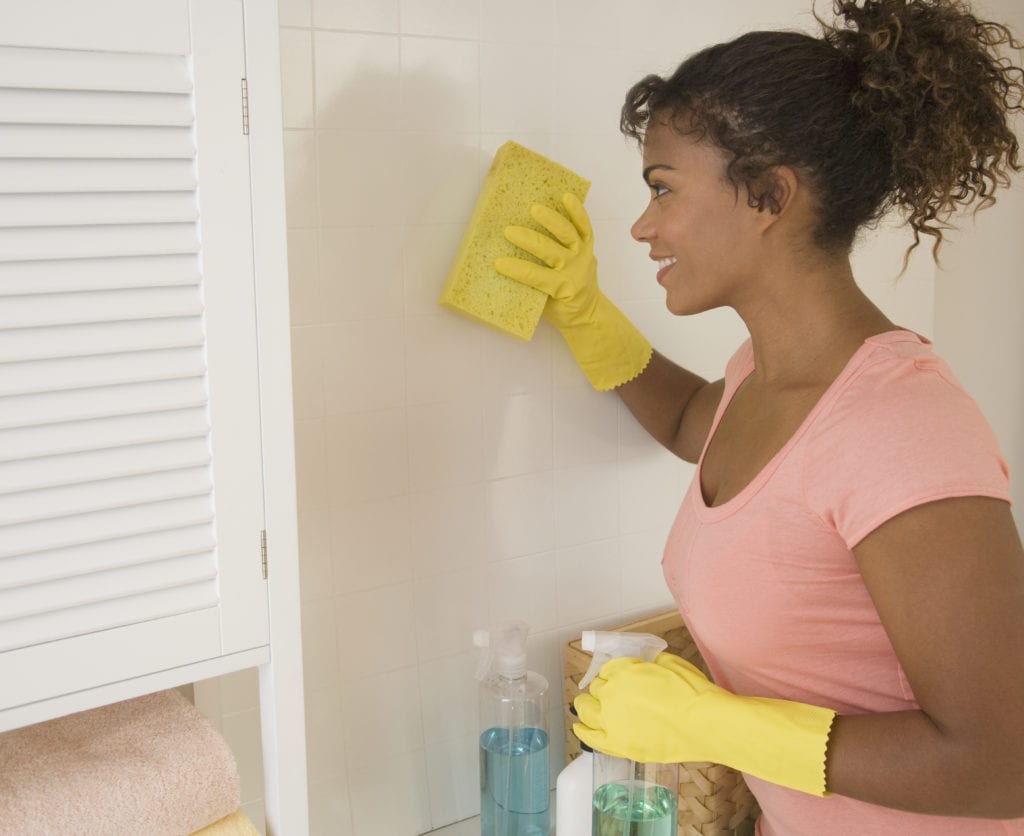
When you’re looking at a new house or apartment, there are a few issues you should keep an eye out for as you tour locations — one of them being the possibility of removing black mold from your new home should you find any. It can be one of the most intimidating problems to tackle because it can impact your health. It’s an issue that can creep into your home through a variety of means: windows, vents, open doorways, and heating and air conditioning systems. Even more alarming is that mold can be carried in from the outside by attaching itself to your pets, clothing, and shoes. Removing black mold can seem like an especially dangerous prospect if you have an underlying condition such as asthma or are immune-compromised.
Thankfully, there is a lot of information readily available about its causes, the health risks it poses, and how to be safe while removing black mold to make this a much more manageable headache to address.
Removing black mold in 6 easy steps
Discovering black mold in your home can be scary. Fortunately, black mold removal is not complicated, and learning how to clean black mold on your own is possible. If you discover black mold that’s contained in one or just a few areas of your house, then follow these six steps:
Step 1: Invest in protective gear.
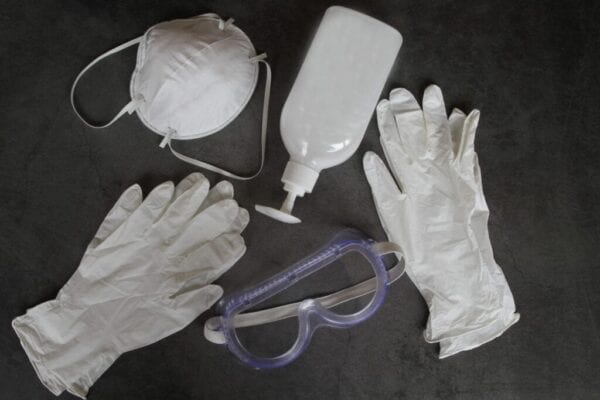
You need to protect yourself while removing black mold — both from the black mold and from the substances you’ll be using. You’ll need a face mask with a respirator, rubber gloves, eye protection, and rubber boots. Be wary if you have asthma or any sort of serious respiratory condition, as this approach may inflame, or trigger symptoms, or even an adverse reaction.
Step 2: Make sure the area is well-ventilated.
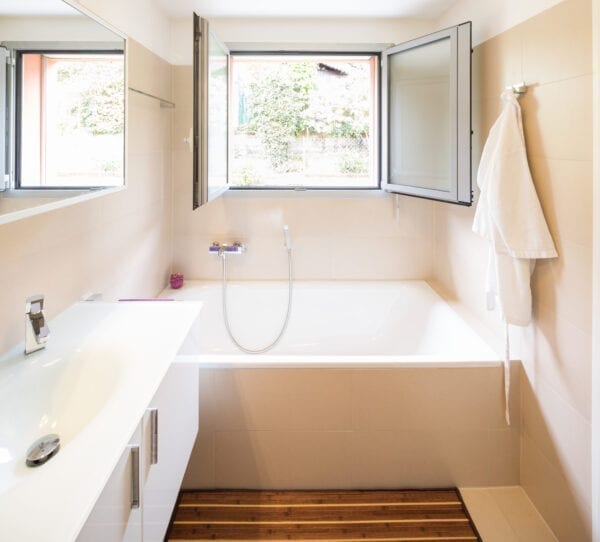
The fumes from the chemicals you use while removing black mold (as well as the mold itself) can irritate your eyes, skin, and airways. If possible, open windows and doors in the area where you are working to allow in fresh air during the process. Turning on the air conditioning fan will create positive pressure inside of the home, assisting in pushing fumes out the nearest vent or window.
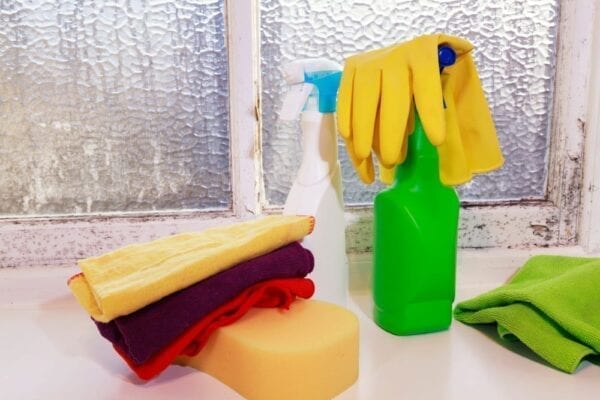
Step 3: Purchase or make a mold-killing solution.
Does bleach kill black mold? This is a common question. The CDC says yes, and recommends using a mixture of bleach and water, one cup of bleach to every gallon of water. You can mix bleach and water on your own or purchase pre-mixed mold killing solutions online or at your local hardware store. If you are considering painting areas such as kitchens, bathrooms, laundry rooms, or any room with demanding surfaces that will be exposed to consistent humidity, KILZ manufactures a variety of paint which may greatly inhibit any future plans on removing black mold, including their Kilz Mold & Mildew Paint & Primer. Not only are they an environmentally friendly option, it works on kitchen cabinetry, as well.
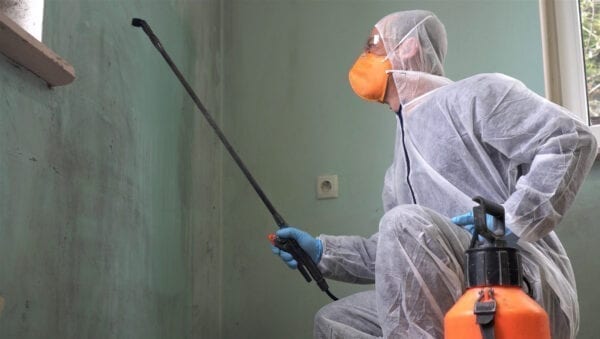
Step 4: Apply black mold removal solution to the infected area.
Scrub the moldy area with a strong-bristled brush and the mold removal solution. Do not wipe the solution away immediately; let it sit and permeate the moldy area. When it has dried, do not rinse this area (you don’t want the moisture to invite the mold back.) Instead, allow the ventilation of the cleaned area so that the evaporating substances may leave behind the active ingredient for removing black mold.
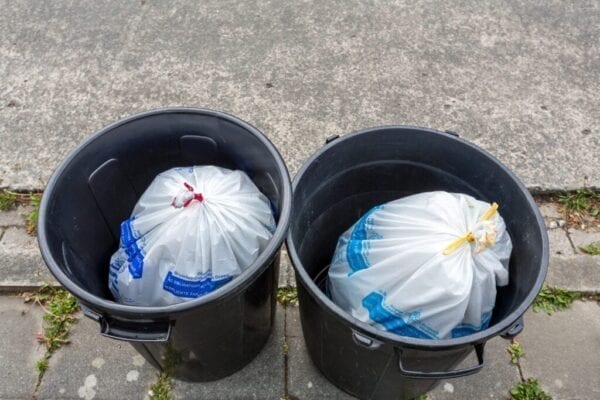
Step 5: Get rid of moldy materials.
If you’ve removed any moldy materials (like carpet or insulation,) make sure to place them in a sealed bag and remove it from your house immediately. Use a wet/dry vacuum to pick up any moldy debris. Empty the vacuum in a trash bag, seal it, and take it outside immediately. Make sure all of this is done while your wearable safety equipment is still fastened and secured.
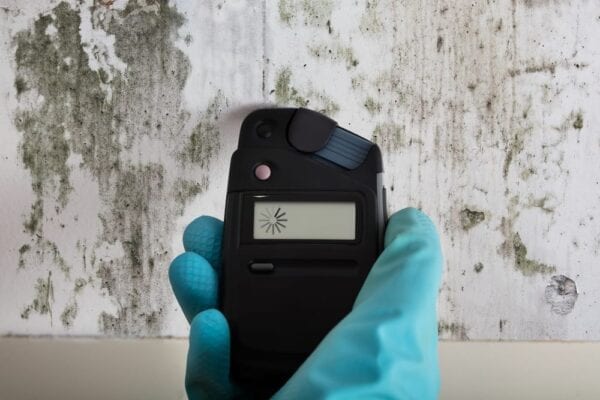
Step 6: Address the moisture problem in the area.
Removing black mold begins with this culprit: moisture. Black mold cannot grow without constant moisture. If you discover black mold in your home, it’s an indication that you have a moisture problem. Address the moisture problem, so the mold doesn’t return in the future.
What causes black mold?
Three elements can cause black mold to grow: the presence of mold spores, constant moisture, and a place for the mold to grow. Mold spores are common in the air outside and can come into your home through openings (like windows, doors, air conditioning systems, etc.,) on pets, and on your clothing.
If there’s an area inside your house that’s exposed to constant moisture, the mold spores can land there and start to grow. The Center for Disease Control and Prevention (CDC) points out several materials that are golden opportunities for black mold growth, including paper products, cardboard, ceiling tiles, wood products, dust, paints, wallpaper, insulation, drywall, carpet, fabric, and upholstery.
Black mold is likely to appear in areas that are susceptible to excess moisture, like bathrooms, kitchens, and areas surrounding doors and windows. A leaky roof can also lead to the appearance of black mold in insulation and drywall, prompting new owners to be wary of the foreseeable effort of removing black mold.
Whether you’re walking through a home for the first time or the thousandth, keep a keen eye out for black mold and monitor spaces where it’s likely to grow.
Is black mold dangerous?
Black mold can be dangerous, especially for people who are sensitive to molds, have mold allergies, or who are already in poor health. The potential negative health effects of black mold range from mild to serious.
Black mold can cause respiratory issues such as coughing, wheezing, and a stuffy nose. Other annoying, but mild, side effects of black mold exposure include a sore throat, burning eyes, and a skin rash. More serious and potentially dangerous reactions to black mold are possible for people with allergies, those who are immune-compromised, as well as infants and the elderly.
The appearance of black mold in your home isn’t a cause for panic, but it should be addressed once you discover it. And make sure to keep an eye on members of your family who could be more susceptible to black mold side effects — both mild and major.
What you’ll need for removing black mold
In order to properly remove black mold, you’ll need to purchase or gather a few products and tools. See the list below:
- Safety goggles. It’s essential that you protect your eyes from the strong fumes that can occur when you treat mold with bleach or a pre-mixed removal agent.
- Respirator mask. A respirator will protect you from breathing in mold spores and fumes while you treat the area for mold.
- Chemical-resistant rubber gloves. The proper type of gloves will protect your skin as you handle potentially harsh cleaning agents.
- Bleach or pre-mixed mold removal solution. Mix bleach with water to create a mold-killing formula. You can also use pre-mixed solutions on the market designed to specifically remove black mold.
- Trash bags. You will want to get any moldy materials out of your house immediately. Get large trash bags that can be filled then sealed.
- Wet/Dry vacuum. This will help you pick up any leftover debris from the removal project.
Chemical-free options for removing black mold
The most natural way of removing black mold is to prevent it from occurring in the first place. Regularly inspect your home for signs of moisture and then fix and seal any areas that let water or condensation in. The mold must have moisture to grow and thrive, which is why preventing moisture is the best way to protect against mold without chemicals.
If you already have a mold problem, there are some products on the market that can treat it without harsh chemicals. Micro Balance EC3 Mold Spray-All-Natural Botanical Surfactant is designed to remove mold without chemicals. There are also products and devices designed to remove moisture from the air and prevent the conditions that allow for mold growth. Examples of moisture-reducing products include activated bamboo charcoal and electric dehumidifiers.
The bottom line
Black mold has the potential to cause annoying and potentially dangerous health issues. As soon as you notice any potential growth, removing black mold should be your priority and then address the underlying issue that allowed it to grow. Black mold requires moisture to grow, so its presence means that you have a moisture issue somewhere inside your house. Eliminating leaks and excess moisture in your house are the two most important things you can do to prevent black mold.
Frequently Asked Questions
Does bleach kill black mold?
The combination of bleach and water can be effective for killing black mold. Be sure and use a gallon of water for every cup of bleach.
Should I move out if I find black mold?
If you have a mild black mold problem, it’s not necessary for you to move out of the house as long as you address it quickly. Widespread black mold is a sign that you have serious water issues and may require professional intervention. The CDC recommends getting help if you have a mold problem that extends beyond the size of ten square feet.
What does black mold look like?
Black mold can appear black and possibly have a green tint. It can show up as dots or as a large area of discoloration.
Can black mold only grow indoors?
According to the EPA, black mold is not limited to the indoors. In fact, black mold may grow in any environment that is consistently exposed to moisture. Since they are small microbes that can be suspended in air, they often exist wherever wind or drafts can reach. As long as there are nutrients and moisture for black mold to rely on, they will grow.
Is there only one type of black mold?
There are, in fact, three different types of common black mold, although there are many more species among many more genera that exist in the world today. Those three most common genera are Aspergillus, Penicillium, and Cladosporium.
Does black mold have a distinct smell?
Yes, black mold carries a musty smell. According to the CDC, black mold odor is noticeably different than most other household odors since their mustiness is a result of decay and as a by-product of their consumption of nutrients.
Amanda Push contributed to this post
